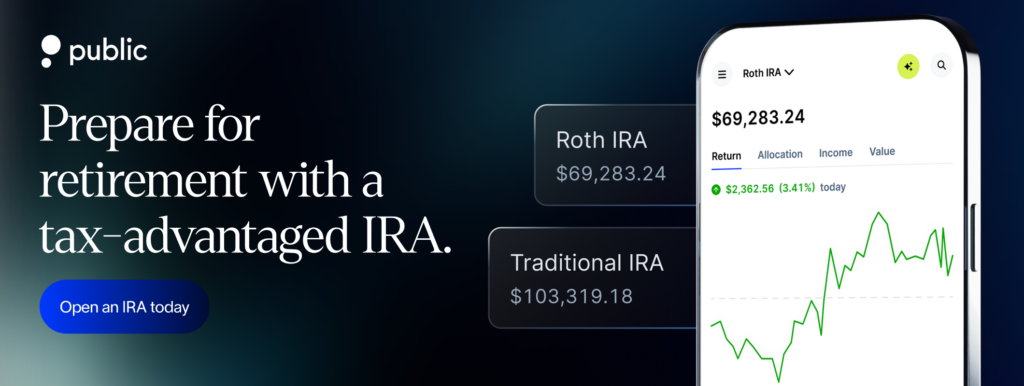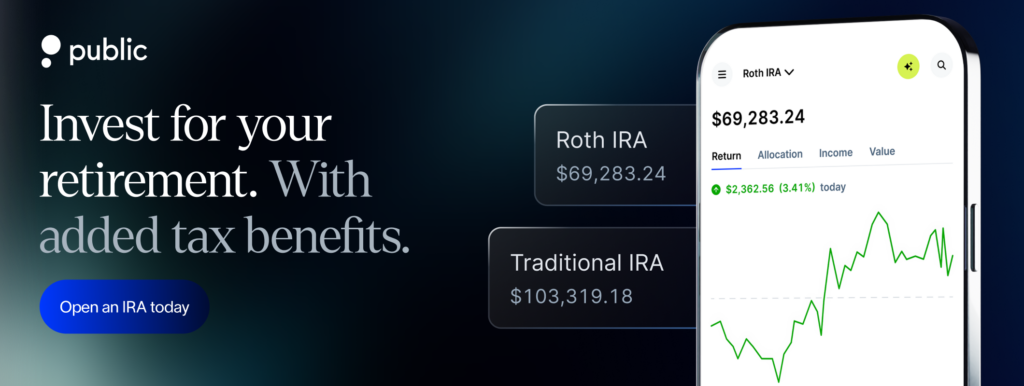As an investor, understanding individual retirement accounts (IRAs) is critical for managing your portfolio and planning for the future. With several types of IRAs available, each with unique rules, benefits, and limitations, it’s important to have updated, detailed information before you decide which account suits your retirement strategy.
This blog explains the IRA, its types, where you can open one, and what it holds.
Understanding an individual retirement account (IRA)
An IRA is a tax-advantaged personal retirement savings account that you can establish independently, without relying on an employer-sponsored plan.
Depending on the type of IRA, your contribution may be made with pre-tax or after-tax dollars., The IRS sets annual limits, income eligibility thresholds, and distribution rules. You can open IRAs through banks, brokerages, or robo-advisors, and customize your investment choices.
What can you hold in an IRA?
In a standard IRA (Traditional, Roth, SEP, or SIMPLE), your custodian typically allows:
- Publicly traded stocks and ETFs.
- Mutual funds. Both actively managed and index-based.
- Bonds and bond funds, including U.S. Treasuries and municipal bonds.
- Certificates of deposit (CDs) and cash equivalents like money market funds.
Certain self-directed IRAs (SDIRAs) may also allow:
- Real estate
- Private equity
- Cryptocurrency (indirectly, depending on the custodian)
As per IRC Section 408(a)(3), you cannot hold:
- Collectibles (art, rugs, antiques, metals, gems, stamps, coins, alcoholic beverages), except specific bullion and U.S.-minted coins allowed under Section 408(m)
- Life insurance contract
- Margin trading and short selling (traditional leverage not permitted; some custodians offer limited margin for trade settlement only)
Types of IRAs you can open (Traditional, Roth, SEP, SIMPLE, and More)
There are seven main types of IRA, each suited to a different tax situation or retirement goal.
- Traditional IRA (Tax-deferred growth)
- Roth IRA (Tax-free qualified withdrawals)
- SEP IRA (Self-employed retirement plan)
- SIMPLE IRA (For small businesses with <100 employees)
- Rollover IRA
- Self-directed IRA (SDIRA)
- Custodial IRAs (IRA for minors)
Let us learn more about each IRA type in detail.
1. Traditional IRA (Tax-deferred growth)
A Traditional IRA allows you to contribute pre-tax or after-tax dollars. Your contributions may be tax-deductible, subject to your income, tax-filing status, and whether you (or your spouse) are covered by an employer retirement plan.
- Purpose: This account allows you to make eligible pre-tax contributions so your investments can grow tax-deferred. You’ll pay taxes on distributions when you withdraw the funds in retirement.
- Tax treatment: Contributions may be deductible, depending on your income and participation in an employer retirement plan. Withdrawals in retirement are taxed as ordinary income.
- Contribution limits: You can contribute up to $7,000 if you’re under age 50, or $8,000 if you’re 50 or older (including the $1,000 catch-up).
- RMDs: You must begin taking required minimum distributions at age 73.
- Eligibility: You need earned income to contribute, but there’s no income cap for contributing. However, the deductibility of your contributions phases out if you or your spouse are covered by a workplace retirement plan. In 2025, the deduction begins to phase out if:
– You file as single with a MAGI of $79,000 (no deduction above $89,000)
– You are married filing jointly and your spouse is covered by a plan, starting at $126,000 MAGI
(no deduction above $146,000)
Opening a Traditional IRA with Public:
You can open a Traditional IRA through Public.com and invest in assets such as stocks, ETFs, U.S. Treasuries, and bonds. Your IRA appears alongside your other Public holdings in a single dashboard, making it easier to view your investments in one place.
2. Roth IRA (Tax-free qualified withdrawals)
A Roth IRA lets you contribute after-tax dollars, meaning you don’t get a tax deduction upfront. However, qualified withdrawals in retirement, including your earnings, are generally tax-free.
- Purpose: Let’s you build retirement savings with the potential for tax-free withdrawals if eligibility rules are met.
- Tax treatment: You don’t deduct contributions, but qualified distributions of contributions and earnings are tax-free once you meet age (59½) and five-year holding requirements.
- Contribution limits: You can contribute up to $7,000 if you’re under age 50, or $8,000 if you’re 50 or older.
- Income limits (2025): Your ability to contribute phases out if:
– You’re single with a MAGI between $150,000 and $165,000 (ineligible at $165,000 or higher)
– You’re married filing jointly -with a MAGI between $236,000 and $246,000 (ineligible at $246,000 or higher)
- RMDs: You are not required to take RMDs during your lifetime.
- Eligibility: You must have earned income and meet the income thresholds.
Opening a Roth IRA with Public:
You can open a Roth IRA with Public.com and invest in a variety of asset types. You can track your Roth IRA performance alongside other Public accounts for a unified view.
3. SEP IRA (Self-employed retirement plan)
If you’re self-employed or own a small business, a SEP IRA gives you a way to make large, tax-deferred contributions for yourself and your employees.
- Purpose: Designed to help business owners contribute to retirement savings for themselves and eligible employees.
- Tax treatment: Employer contributions are tax-deductible to the business; withdrawals are taxed as ordinary income.
- Contribution limits: You can contribute up to 25% of compensation or $70,000—whichever is less.
- RMDs: You must begin taking required minimum distributions at age 73.
- Eligibility: Available to employers (including self-employed individuals) that contribute the same percentage for each eligible employee.
4. SIMPLE IRA (For small businesses with <100 employees)
A SIMPLE IRA allows you and your employer both to contribute towards your retirement savings.
- Purpose: Offers small businesses a retirement plan with lower administrative costs and required employer contributions.
- Tax treatment: Contributions are made pre-tax, reducing taxable income; withdrawals are taxed as ordinary income.
- Contribution limits: $16,500 if under 50; $19,500 if 50+; ages 60–63 can contribute up to $21,750.
- RMDs: You must begin taking required minimum distributions at age 73.
- Eligibility: Employer must have ≤100 employees. Employer contributions are required—either a 3% match or 2% non-elective for all eligible employees.
5. Rollover IRA
A Rollover IRA lets you move money from an old workplace plan (such as a 401(k)) into an IRA without paying taxes if done correctly. Once rolled over, your account follows Traditional IRA rules.
- Purpose: Preserves your tax-advantaged savings when you change or leave a job.
- Tax treatment: Matches the tax treatment of the IRA type you roll funds into (Traditional or Roth).
- Contribution limits: Standard annual IRA limits apply to new contributions, but rollover amounts are not bound by the $7,000/$8,000 limit.
- RMDs: Follow the rules of the IRA type you rolled into.
- Eligibility: Available if you have eligible employer-plan assets to move into an IRA.
6. Self-directed IRA (SDIRA)
A Self-Directed IRA lets you hold alternative assets not typically available in standard IRAs.
- Purpose: Expands your investment options beyond traditional securities.
- Tax treatment: Matches the tax benefits of either a Traditional or Roth IRA, depending on your SDIRA type.
- Contribution limits: $7,000 or $8,000 if 50 or older (for new contributions).
- Examples of allowable assets: Real estate, Private placements, Precious metals meeting IRS standards, Cryptocurrencies (with a custodian that supports them)
- Eligibility: You must work with an IRS-approved custodian who allows these assets and comply with all IRS prohibited transaction rules.
7. Custodial IRAs for minors
A Custodial IRA lets you open and manage an IRA on behalf of a minor with earned income and you(adult) manage the account until the child approaches the age of 18.
- Purpose: Helps minors start saving for retirement early.
- Tax treatment: Can be set up as either a Traditional or Roth IRA, with tax benefits depending on the type chosen.
- Contribution limits (2025): Up to the minor’s earned income or $7,000, whichever is less.
- Transfer of control: At the age of majority (18 or 21, depending on state), the account transfers to the child.
- Eligibility: The child must have earned income for the year; an adult custodian manages the account until the child reaches the age of majority in their state.
Where can you open an IRA in 2025?
You can open an IRA through brokerage platforms like Public.com or via banks, credit unions, and mutual fund companies.
Through Public, you are able to:
- Set up a Traditional or Roth IRA
- Invest in a range of assets, including stocks, exchange-traded funds (ETFs), and U.S. Treasuries, within the same account.
- Earn an uncapped 1% match on IRA rollovers and transfers. Plus, earn 1% on your eligible annual contributions.
Explore Traditional IRA & Roth IRA accounts on Public.com
Conclusion
Retirement savings can be managed through various types of IRAs, such as Traditional, Roth, SEP, and SIMPLE. This guide explains specific contribution limits and eligibility requirements for each type.
Knowing these distinctions may help you align your choice with your financial plan while staying within current regulations. Rules can change annually, so reviewing the latest IRS updates before making decisions is important.
Frequently asked questions
Can you combine a traditional IRA with a 401(k)?
No, you cannot directly merge or combine a traditional IRA with a 401(k) into a single account. However, the IRS does allow you to roll over funds from a 401(k) into a traditional IRA, or in some cases, roll traditional IRA funds into a current employer’s 401(k) plan if the plan allows it.
Can you borrow from an IRA?
No, you cannot borrow money or take a loan from any type of IRA. However, you can use the 60-day rollover rule to temporarily access funds if you redeposit the full amount within 60 days.
Can you lose the tax advantage of an IRA?
The tax-advantaged status of an IRA can be lost if you engage in a prohibited transaction, such as using IRA assets for personal benefit or transacting with disqualified persons. If a prohibited transaction occurs, the IRA generally loses its tax-exempt status, and the entire balance may become taxable.
How many IRAs can you have?
You can own multiple IRAs, traditional, Roth, SEP, or SIMPLE, but your total annual contributions cannot exceed the IRS limits across all accounts.
Can you contribute to both a Roth and a traditional IRA in 2025?
Yes, you can contribute to both types in the same year if you meet eligibility requirements. The combined contributions to all your IRAs cannot exceed $7,000 (or $8,000 if age 50+) for 2025.
What documentation proves my IRA contributions to the IRS?
Form 5498 is the official document that reports your IRA contributions to the IRS. Your IRA custodian sends this form to both you and the IRS by May 31 following the contribution year, and you should keep it for your records.





